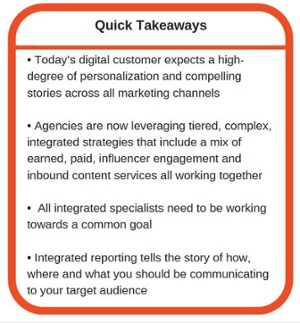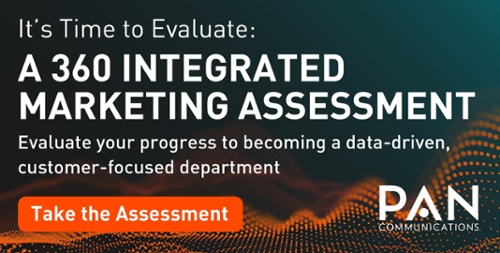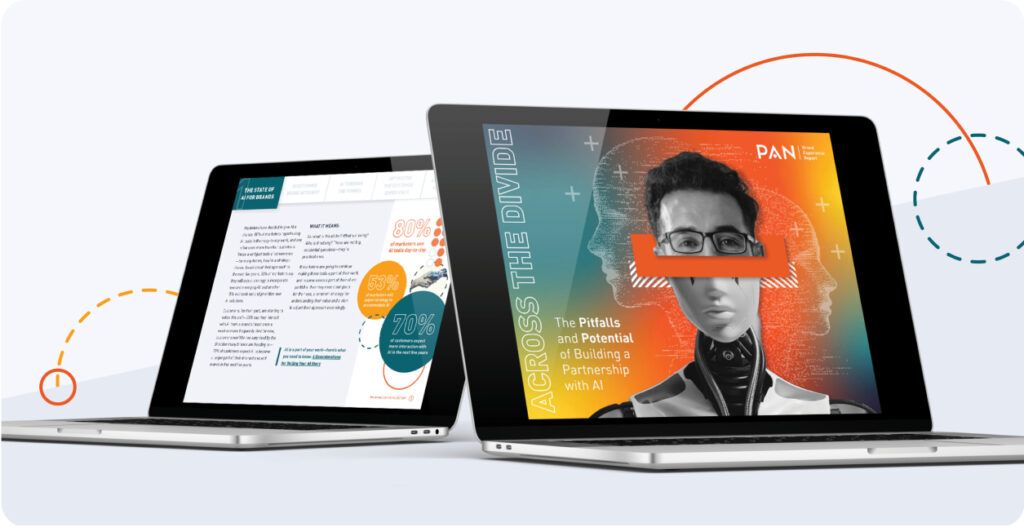 We’ve spoken with hundreds of marketing and PR professionals over the last few years about their challenges in this “always on” customer-centric world. Opinions would vary – I need a team to be my arms and legs to the media; I want to create stories that consistently drive awareness; I need an integrated approach when moving my content across channels. For a firm, this presents an opportunity to grow, but also the fear to fail. Far too often, companies will try and promise they can deliver on the future, when realizing they may be risking their area of expertise – and ultimately the trust they established with their client.
We’ve spoken with hundreds of marketing and PR professionals over the last few years about their challenges in this “always on” customer-centric world. Opinions would vary – I need a team to be my arms and legs to the media; I want to create stories that consistently drive awareness; I need an integrated approach when moving my content across channels. For a firm, this presents an opportunity to grow, but also the fear to fail. Far too often, companies will try and promise they can deliver on the future, when realizing they may be risking their area of expertise – and ultimately the trust they established with their client.
We used to run on independent tracks – only being responsible for our own goals and ROI benchmarks within the walls of PR, lacking communication between a brand’s internal departments and their other external partnerships.
But my how times have changed. Now, we are experiencing the age of the modernization, where the marketer-agency relationships and integration with the expanded teams are more important than ever.

Why is this change happening now? We see four critical areas that are driving this transformation between marketing teams and their agency partners:
1. The Customer Experience
Today’s digital customer expects a high-degree of personalization and compelling stories across all marketing channels – media, mobile, content, web, SEO, social, etc. – making communication more complex and ever-expanding. Our teams need to map emotion to the journey – and ensure we are lock step in line with the customer journey. Creating the right narrative and matching the right content across the ideal channels at the right time has forced agency and brand engagements to think differently. Agencies used to just be concerned with top of funnel engagement, but now they’re challenged with showcasing leads, referral traffic, providing voice of customer strategies, advocacy programs and the like. This is all in conjunction with the needs and pace of the connected customer.
 2. Integrating PR and Marketing Services
2. Integrating PR and Marketing Services
To match these customer expectations, agencies had no choice but to evolve in order to stay relevant. If you think back five or six years ago, integration just meant that your agency was providing clients with media support and social channel strategies and execution. Now, fast forward to the modern and digital customer – agencies can’t afford to lose out on micro-moments of connection. They need to act fast and deliver to their clients what their customers are expecting. This means agencies are now leveraging tiered, complex, integrated strategies that include a mix of earned, paid, influencer engagement and inbound content services all working together. We realize brands need to remain top of mind with customers and engage at ideal moments in the journey with connected content that meets their interest. The only way to do that is via an integrated playbook – bringing together all marketing teams (see skills below), tapping into every channel and forming that emotional connection. Traditional ways will no longer cut it, your competitors have moved past that and being an early adopter to this approach isn’t an option.
3. Specialized or Hybrid Skills
To make this all happen in a holistic and seamless fashion, BOTH the agency side and internal teams need to work together by having all skillsets aligned. There were times we had clients with several media specialists in a department. That’s not the case today. Now, we are working with a combination of talented teams across PR, demand gen (content marketing), influencer relations, social media, data/analytics, etc. All of these integrated specialists need to be working towards a common goal by working together to move ideas forward, faster, smarter, better, with full transparency.
Clarity around roles and responsibilities among new and existing partners will be your first step towards integration. Pre-determine which tasks can best be done internally versus the capabilities that need to be utilized externally. And realize that joining forces to make up ONE team always wins out in the end.
4. Data, Analytics and Measurement
The new agency model requires the delivery of truly integrated measurement reports that highlight which channels are delivering what kind of SOV, website traffic, leads and ROI. Gone are the days of vanity metrics. Integrated reporting tells the story of how, where and what you should be communicating to your target audience and where your investments should flood into for the next campaign, channel or persona. It’s not enough for agencies to report on a quarterly basis – they must be continuously measuring in real-time to keep pace with today’s multi-channel customer.
If your brand hasn’t turned to integration yet, it might be time to reengineer your marketing and communications department. Your brand’s internal structure of the marketing department must align with the modern, data-driven services firms are providing today. This means a different way of working across agencies and internal departments. The benefits of collaboration and full-integration include creativity, speed, agility and cohesiveness – to name a few. However, these benefits won’t be seen unless an evolved integrated framework is put in place – on both sides of the aisle.
 Does your integrated agency model match this framework? If not, it’s time to connect. Let’s chat @markcnardone.
Does your integrated agency model match this framework? If not, it’s time to connect. Let’s chat @markcnardone.


 2. Integrating PR and Marketing Services
2. Integrating PR and Marketing Services
